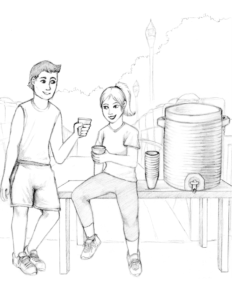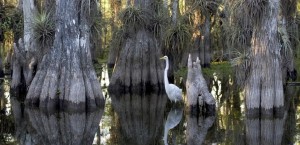Imagine playing college ball in a sane world. Imagine going to normal classes, meeting normal expectations, going out on normal dates, and finding time for practice and games as part of a healthy, normal life.
Imagine your friends all over the country doing the same. Now imagine that to celebrate the new year, all the colleges agreed to send some of the best teams that year to play on New Year’s Day. They’d play against teams they’d otherwise never meet. Players would represent not just their college but their conference as well, the group of colleges against whom they struggle each season.
Imagine the games as pageants, as local festivals, as theaters in which the town and the visiting teams would show off what made them distinct.
Imagine now the Orange Bowl. It was both a stadium and a metaphor. “Orange Bowl” once could mean the venerable old lady that stood for almost a century in Little Havana, the east end-zone open to the sea breeze. My grandfather took my father there; he in turn took me; Donna Shalala had it torn down because people weren’t paying enough attention to her.
“Orange Bowl” could also mean the bowl game itself with its attendant festivities.
As you imagine this improbable world of truly amateur athletics, imagine that cities would be so delighted at hosting the game, and at welcoming the new year, and at celebrating the Octave of the Nativity that people would take the time to build and run a parade. It was called the Orange Bowl Parade, naturally enough, and its Grand Marshal was King Orange (no relation to William and Mary: our King Orange was a giant, walking piece of fruit).
Well, as Providence would have it, a couple of wise guys wanted to march in the parade, oh, some thirty years ago. They proposed marching as a travelling band of kazoos and conch shells, and were turned down. The OB Parade was not exactly a downtown exhibition of the Vatican Collections, so it takes a little work to get disinvited. But Mr. Terry and his band of merry men were indeed passed over, and so they took their conchs and went home – specifically, to the Coconut Grove, which at the time was substantially seedier and more colorful than it is now.
King Orange would get his parade, followed by boring floats and even more boring committee members in those hideous blazers. The Grove would get King Mango, which frankly is already awesomer, because oranges are silly. Toothless hicks in Sebring grow oranges. Restaurant strippers, clueless criminals, Santeria priests, and shark-bearing hoboes grow mangoes.
The King Mango Strut was meant to celebrate everything the Orange Bowl Parade was not: irreverent, improvisational, and decidedly weird. For a time, Dave Barry, the only celebrity Miami natives actually like, hosted the show. Queen Draino, a 70-year-old chain-smoking dude in a dress, rode a tricycle while drunk out of his mind (it was never clear whether he knew he was in the parade, because that’s pretty much what he did *every Sunday). When Draino died, his trike rode atop his bier at the Strut, complete with a lace brassiere tied around his ashes.
Most floats were (and still are) just a group of folk walking down the street with signs and costumes that look like they were put together with duct tape and crayon over breakfast after a long night of drinking. Sometimes the crowd gets favors, as in the Lorena-Bobbit float of the mid-90s, when a woman with hedge clippers threw cocktail franks into the crowd. Sometimes it’s the marchers who get the favors, as when a man costumed as George W. Bush was bombarded with an impromptu barrage of shoes during the 2008 Strut. You will find a non-negligible concentration of transvestites promenading down Main, dancing to a song only they can hear, as well as a surprising amount of partial nudity perpetrated by the elderly and the obese.
These days, political correctness has taken some of the zing out of the Strut, but the stalwarts keep the faith. In fact, I’m pretty sure the only people who march now were those who participated back in the 80s and just never bothered to stop. But election years are good years for the Strut, and 2016 promises plenty of material. Arrive early. I’ll see you there.



